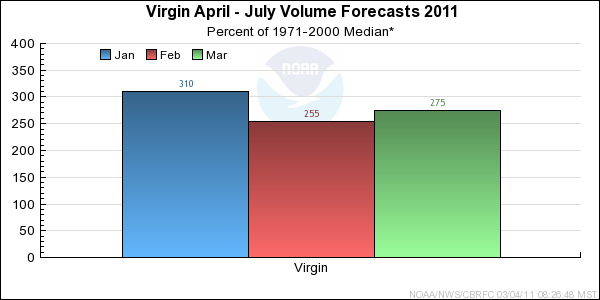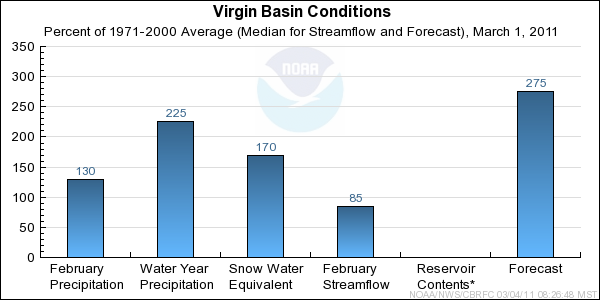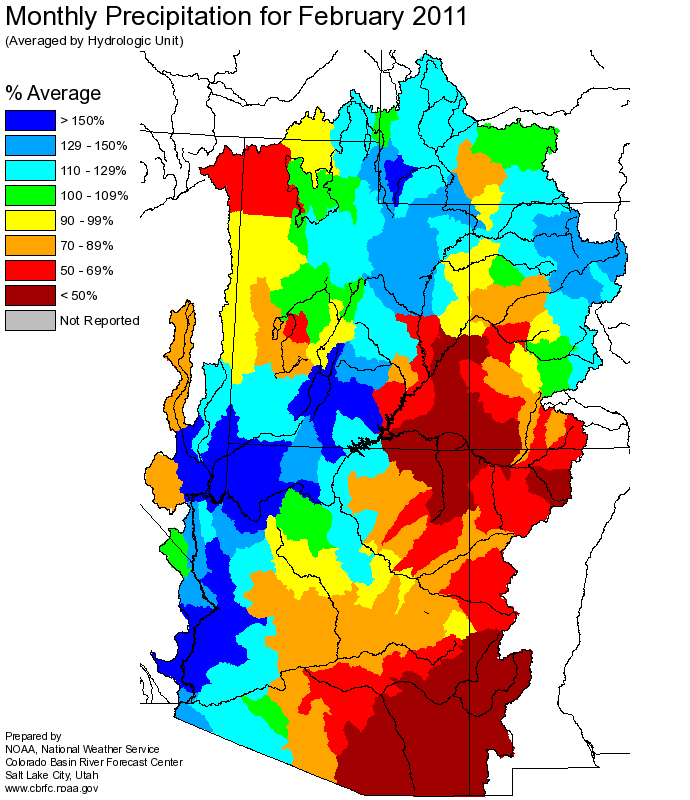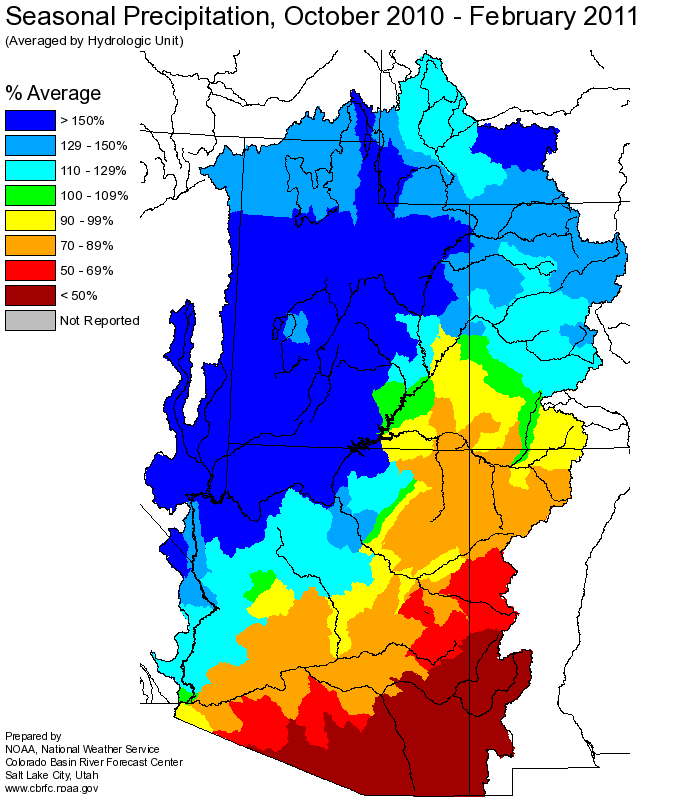The following conditions influenced this month's forecasts:
Precipitation:
Seasonal October-February
precipitation was
near 225 percent of average in the Virgin Basin headwaters and ranged rom 130 to 290 percent of average elsewhere.
February
precipitation was near 130 percent of average in the Virgin Basin headwaters,
and 90 to 240 percent of average throughout the remainder of the Basin.
Snow:
March 1st snowpack in the Virgin River Basin ranged from 150 to 210 percent of average at elevations above 7500 feet.
Virgin River Basin
Snow Plot.
Streamflow:
February streamflow volumes in the Virgin headwaters were near 110 percent the 1971-2000 median.
Soil Moisture:
Above average soil moisture conditions exist throughout the Virgin River Basin.
Climate Forecasts:
La Nina climate conditions suggest slightly decreased chances of precipitation in this area. The La Nina
influence was considered in generation of these forecasts.
Forecast Summary:
Storms during the second half of February deposited additional snowfall to elevations above 6500 feet
and brought Feburary precipitation totals to above average levels. The snowpack has exceeded
the seasonal peak snowpack levels that typically occur in late March or early April. At some
locations snowpack conditions are 200% of the average seasonal peak. Significant precipitation
in October and December resulted in above average soil moisture conditions throughout
the Virgin River Basin.
Despite La Nina climate conditions, that suggest increased chances for below
average precipitation, conditions are more conducive for more significant runoff. April-July runoff volumes
are forecast to range from near 270 to 285 percent of median, or 155 to 175 percent of average.
Differences between the full period forecasts and the residual forecasts may not exactly equal the actual observed volumes due to rounding conventions (see Definitions section).





